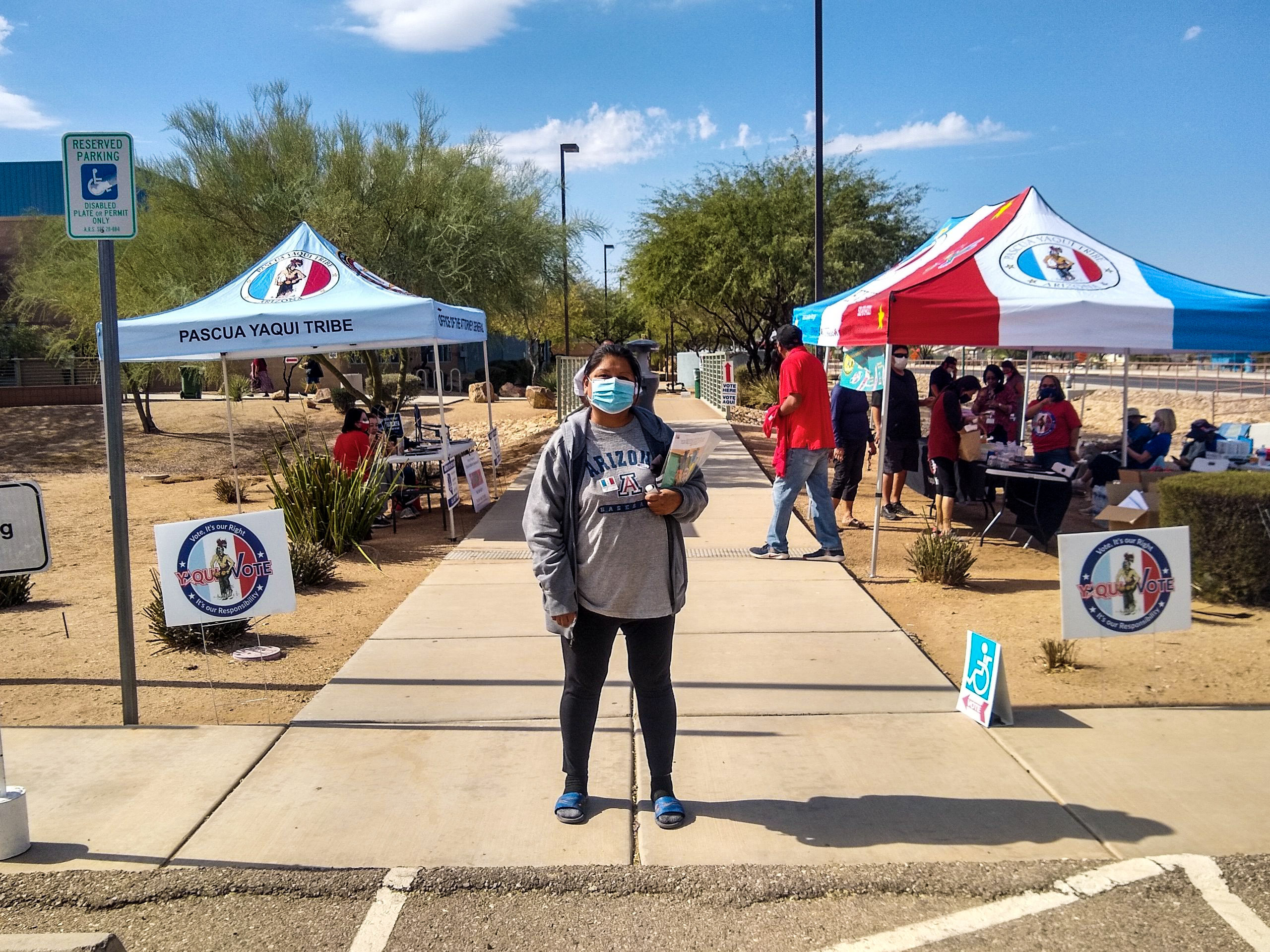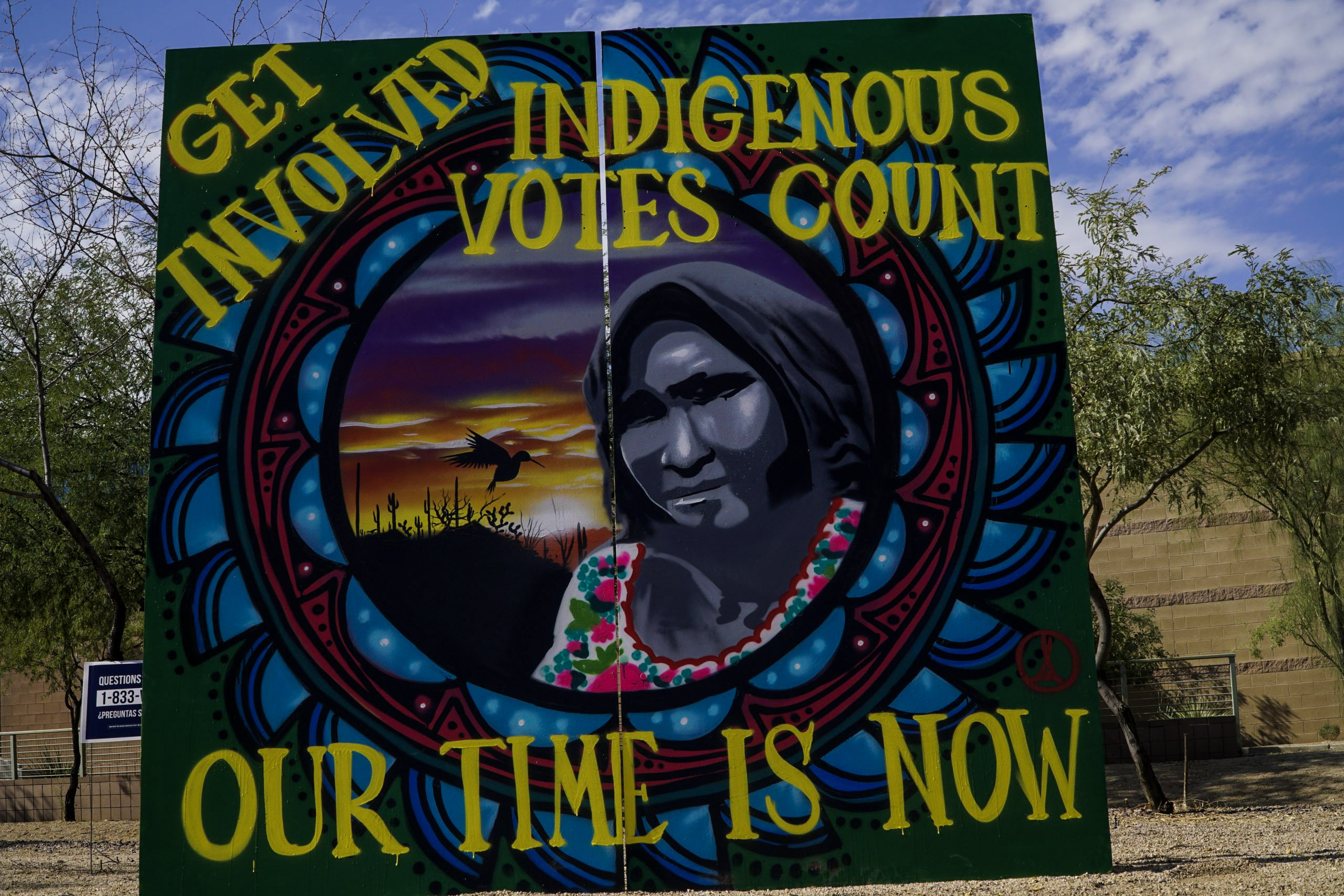Indianz.Com > News > Cronkite News: Native vote turned out for Democrat Joe Biden

Pandemic, Trump and racism drive voter turnout in some tribal communities
Thursday, December 10, 2020
Cronkite News
PHOENIX – Enthusiasm across Arizona was higher this election than in the 2016 presidential contest, and final results show the contrast was even more stark in Indian Country, where voters said they were especially motivated because of the COVID-19 pandemic and issues of race.
A census
analysis
of 2018 data found American Indians were at least 4.4% of eligible voters in Arizona, or more than 220,000 people. Considering the neck-and-neck battle in Arizona’s presidential election this year – decided by a mere
10,457
votes – they had the power to swing the outcome.
“Knowing the thin margins in the last couple of elections, this was a year that we knew that a vote really mattered, and we took it seriously,” said Kevin Allis, the former chief executive officer of the National Congress of American Indians. “(Native voters) likely played a very key role in close races in Arizona.”
Mirroring a trend across the U.S., voter
turnout
was higher in all 15 Arizona counties compared with the
2016
general election. Statewide, turnout increased 5.7% from 2016, to 79.9%.
The largest jump came in Apache County, which contains swaths of the Navajo Nation and the Fort Apache Indian Reservation and has a 73% Native population. Turnout there rose 10 percentage points, from 59% in 2016 to 69% this year.
President-elect Joe Biden received more than 66% of the votes there, according to county canvassing data. That’s 5 points better than how Democratic nominee Hillary Clinton finished in the county in 2016.

The American Election Eve Poll, conducted in the two weeks leading up to the election, identified the pandemic as the most important issue among Native voters surveyed in the state. COVID-19 death rates are higher for Indigenous people and other people of color, both in Arizona and the U.S. The Navajo Nation alone has lost more than 660 people to the disease; its death rate has been higher than any U.S. state. Franklin Sage, director of the Diné Policy Institute in Tsaile, said Trump’s downplaying of the virus didn’t sit well on the reservation. He has voted for both Republicans and Democrats but this year went with Democrats up and down the ticket, and the two biggest issues driving his decision were the pandemic and racism. “It’s almost like going back to the ’60s when the civil rights movement really started, with the racism being blatantly open,” Sage said, adding that this sentiment is clearly “encouraged by this president.” Priscilla Coronado Madrid, 47, a member of the Pascua Yaqui Tribe, was a cashier at a Shell gas station before the pandemic cost her her job. The mother of three said she voted for Biden “because I feel that he will make an effort to figure out something about this COVID – financially, emotionally.” “We’re still trying to get back on our feet,” she said. Christina Morris, a Navajo living in Farmington, New Mexico, said she considers herself to be center-right when it comes to politics – which isn’t an easy thing these days. “I feel like it’s not just right or left. Today’s climate is either you’re far right or you’re far left,” she said. “There’s no middle ground.” She said “leadership and racism” were the reasons she chose Biden. https://twitter.com/Schischillyy/status/1325239287978233857 Navajo Nation President Jonathan Nez said he believes Native voters made all the difference this election. In a recent interview with Arizona PBS, he noted that COVID-19 relief drives across the reservation had doubled as voter registration drives and helped increase interest. “And I think because of the Navajo vote, we actually helped change Arizona from red to a blue state,” he said. Now, he hopes the new administration makes good on promises to give Native Americans a seat at the table. Already, Biden has added a Navajo to his COVID-19 advisory board: Dr. Jill Jim, executive director of the Navajo Nation Department of Health. During the campaign, Biden released his ideas for Indian Country, emphasizing education funding for tribal schools, Native American voting rights, and addressing health disparities. But Sage noted it’s easy to say the right things when you’re trying to get votes. “I think a lot of politicians only come around the reservation during the election,” Sage said. “And the rest of the time, I think some of the Navajos think that they are being forgotten.” For more stories from Cronkite News, visit cronkitenews.azpbs.org.Congratulations to the FIRST Indigenous person elected to county-wide office in Pima County @gabriella_for Gabby Cázares-Kelly!#IndigenousWomanComingThrough
— Regina Romero (@TucsonRomero) November 4, 2020
Note: This story originally appeared on Cronkite News. It is published via a Creative Commons license. Cronkite News is produced by the Walter Cronkite School of Journalism and Mass Communication at Arizona State University.
Search
Filed Under
Tags
More Headlines
Native America Calling: Three new films offer diverse views of Native life
NAFOA: 5 Things You Need to Know this Week
Chuck Hoskin: Cherokee Nation works toward cure for arthritis
Native America Calling: Protecting young people from the down sides of social media
Native America Calling: New Native voices in poetry
Native America Calling: Indiginerds descend on Oklahoma City
Native America Calling: Political leaders target tribes with unfounded claims
Native America Calling: Tackling a troubling trend for Native women in prison
Chuck Hoskin: Cherokee Nation safeguards our Native language
Native America Calling: How will $1.5 billion in opioid settlement money help the populations hit the hardest?
Native America Calling: Protecting the night sky
Native America Calling: Breaking 100 years of silence over ‘Posey War’
Native America Calling: Dedication to language revitalization
Native America Calling: The Great Alaska Earthquake 60 years later
Native America Calling: Native Bookshelf with Blackfeet author Stephen Graham Jones
More Headlines
NAFOA: 5 Things You Need to Know this Week
Chuck Hoskin: Cherokee Nation works toward cure for arthritis
Native America Calling: Protecting young people from the down sides of social media
Native America Calling: New Native voices in poetry
Native America Calling: Indiginerds descend on Oklahoma City
Native America Calling: Political leaders target tribes with unfounded claims
Native America Calling: Tackling a troubling trend for Native women in prison
Chuck Hoskin: Cherokee Nation safeguards our Native language
Native America Calling: How will $1.5 billion in opioid settlement money help the populations hit the hardest?
Native America Calling: Protecting the night sky
Native America Calling: Breaking 100 years of silence over ‘Posey War’
Native America Calling: Dedication to language revitalization
Native America Calling: The Great Alaska Earthquake 60 years later
Native America Calling: Native Bookshelf with Blackfeet author Stephen Graham Jones
More Headlines